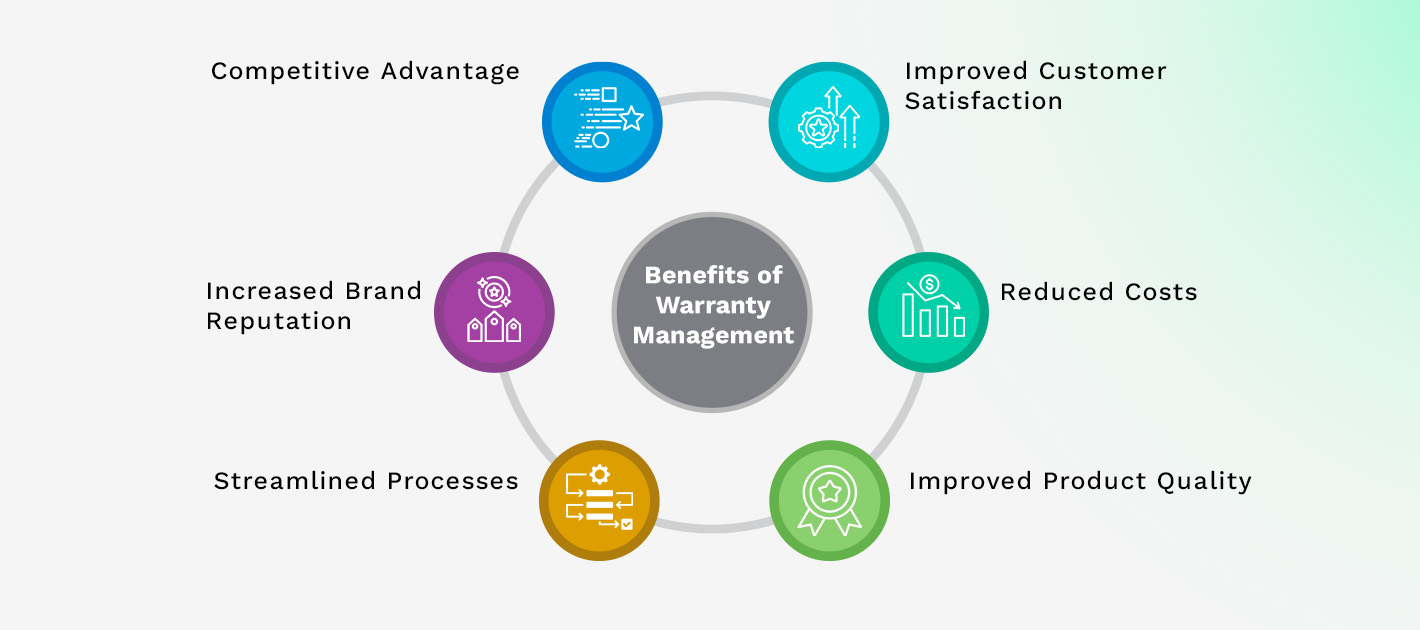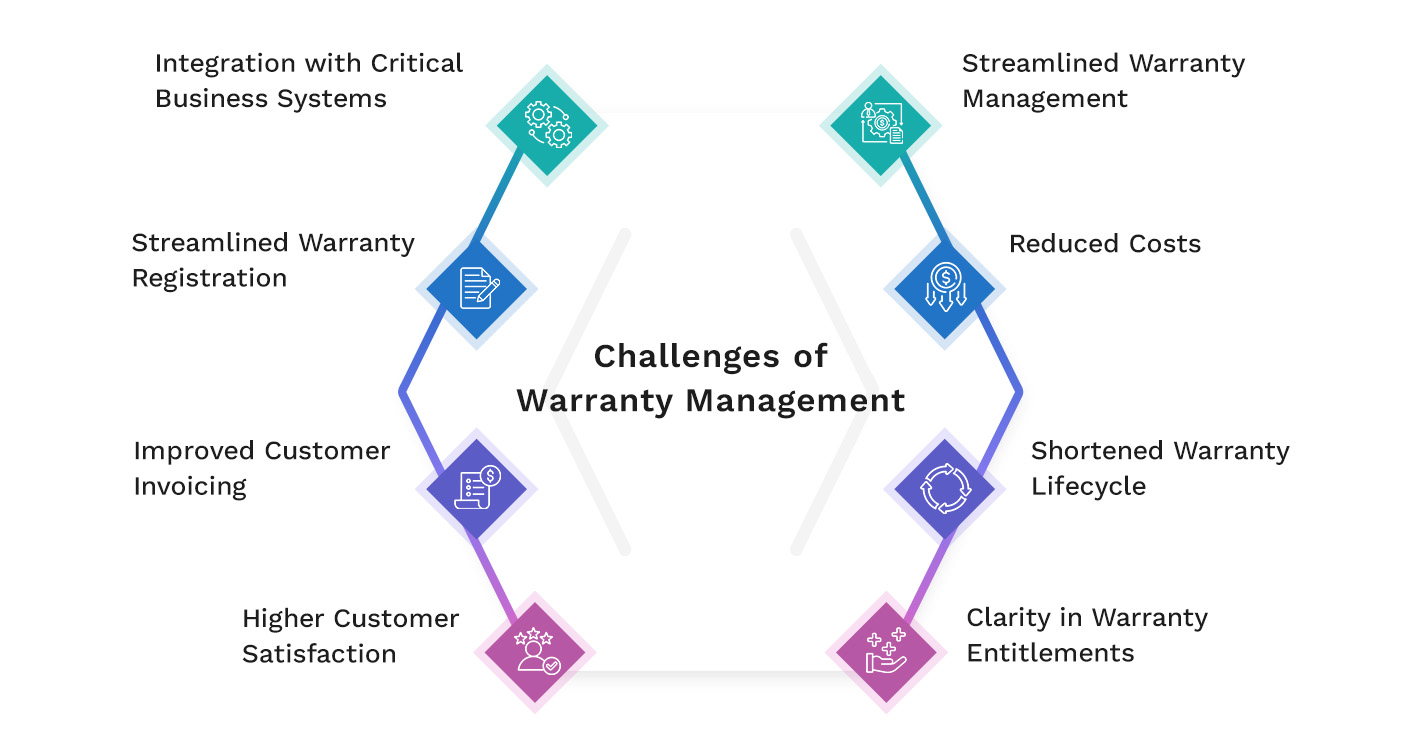Warranty management is key for any firm that serves customers. It lets them keep track of warranty info on products their customers own. If not done well, it can lead to lower sales and upset customers. U.S. companies alone dealt with $25.9 billion in warranty claims in 2019.
Key Takeaways:
- Warranty management ensures customer satisfaction and revenue retention.
- U.S.-based companies paid $25.9 billion in warranty claims in 2019.
- An effective warranty management system helps businesses streamline processes, reduce costs, and improve operational efficiency.
- Optimizing warranty management involves assessing existing processes, improving data quality, and deploying automation.
- Kohezion offers comprehensive warranty management solutions to optimize warranty processes and improve customer satisfaction.
What is Warranty Management?
Warranty management is the process of handling the warranties people get with their products or services. It ensures customers get the help they are supposed to when they have a warranty. It aims to have clear ways to deal with warranty claims, keep track of what warranties cover, and offer quick and right customer service. Good warranty management makes customers happier. It also cuts costs and makes things run more smoothly for the company.
Why is Warranty Management Important?
Warranty management makes sure customers get the service they deserve. This increases customer happiness and loyalty. When a product's warranty is solid, people trust the brand more. They keep coming back to buy its products.
It also reduces costs for businesses. Less money is spent on warranties, and less is spent on replacing parts and labor. Saving on these costs helps the bottom line. Companies can then put more into making better products or growing their business.
Warranty management isn't just about saving money. It also offers important information. Businesses use this data to improve their products. They can spot trends, find defects, and see how customers use their products. This helps them make products that perform better, satisfying customers more.
Benefits of Warranty Management
An effective warranty system helps businesses improve their workflows and increase customer satisfaction. Let’s explore the advantages of using solid warranty management plans:
Improved Customer Satisfaction
Warranty management ensures good support, which results in improved customer satisfaction. This keeps customers coming back, increasing a brand's loyal fans.
Reduced Costs
Good warranty management cuts the money spent on fixing errors. This includes what's spent on parts and work. As a result, businesses save a lot of money.
Improved Product Quality
Warranty insights highlight how well the products are performing. This data helps improve quality and make smart choices for better products.
Streamlined Processes
Setting up clear steps to deal with warranties makes things smoother. This lowers mistakes and makes work run better.
Increased Brand Reputation
When a business offers solid warranty support, it builds trust, which means more people feel good about buying from it.
Competitive Advantage
Those good at managing warranties set themselves apart. They provide great service, save money, and look better than the competition.
| Benefits of Warranty Management | Advantages of Warranty Management | Positive Impact of Warranty Management |
| Improved Customer Satisfaction | Reduced Costs | Improved Product Quality |
| Streamlined Processes | Increased Brand Reputation | Competitive Advantage |

Challenges of Warranty Management
Warranty management brings its own set of hurdles. Some of these include:
- Streamlined Warranty Management: Businesses face a challenge in keeping their warranty processes smooth. This means they need to handle warranty claims and product/service tracking well and stay on top of things.
- Reduced Costs: Keeping warranty costs in check is another significant challenge. From claim to repair, all the expenses might hit the company's finances hard. Managing warranties efficiently can help cut down on these costs.
- Shortened Warranty Lifecycle: Managing warranty lifecycles well is tough, too. It's not easy to ensure warranties stay valid for the right time, especially when products have different coverage periods.
- Clarity in Warranty Entitlements: Customers rightfully want to know what their warranty covers and for how long. But, explaining these terms clearly can be a tough ongoing task for companies.
- Higher Customer Satisfaction: Keeping customers happy with warranty service poses its own set of challenges. Clearing claims fast, offering easy help, and ensuring customers are pleased are big parts of this.
- Improved Customer Invoicing: Getting invoicing right in the warranty process is also a hurdle. It involves documenting everything, tracking costs, and sending out invoices accurately.
- Streamlined Warranty Registration: Getting products registered for warranty can be hard, especially with a lot to handle. Making registration easy and accurate is key for businesses.
- Integration with Critical Business Systems: Linking warranty systems with other business software is a major task. A smooth connection can help with the flow of warranty data within the company.
Solving these warranty management challenges requires a full review of operations and technology. With the right tweaks and improvements, businesses can make warranties work better for them.

How to Optimize Your Warranty Management
Here are the steps on how to optimize your warranty management:
Assess your existing warranty management strategy
Review how you currently manage warranties. Look at where you can make things better. Check how well you track warranties, handle claims, and serve customers. Find and fix any slow or messy parts to make managing warranties smoother.
Highlight the significance of warranty management
Teach your team why warranties are important. Show how they increase customer happiness and business success. Explain how good warranty practices build a strong brand and keep customers coming back. Aim to always put the customer first in your warranty efforts.
Improve the quality of your warranty management data
Good data is key to effective warranty management. Use tools to clean up old or repeated info. Keep customer and product data fresh to ensure accurate warranties. Investing in data management helps keep your warranty records in top shape.
Introduce automated processes for generating warranty agreements
Set up a system that makes creating warranties easy and accurate. This system should use the customer and product info to create the warranties. It makes signing up for warranties a smooth process for everyone.
Deploy mobile technology for field service operatives
Give field workers mobile tech to check warranties on the go. This lets them quickly see what's covered, start claims, and serve customers better. Mobile tech improves their work speed and reduces paper, improving how customers experience your service.
Integrate automated systems for warranty registration
Connect your warranty sign-up with automated systems and your customer database. This means warranty information is always accurate, and there are fewer mistakes when typing it manually. Automatic warranty sign-up makes the process faster and keeps customers happy.
Monitor and handle warranty expirations and renewals efficiently
Monitor when warranties expire and offer easy ways for customers to renew. Send reminders before their warranties run out. This ensures you don't miss opportunities to renew warranties and earn more. Managing warranties this way strengthens your bond with customers and keeps them coming back.
Validate the competencies and certifications of your service staff
Make sure your service team is up to date and well trained to handle warranties. This includes checking they have the right certificates and skills. A skilled service team means better warranty care and happier customers.
Streamline the processing of warranty claims
Simplify how you deal with warranty claims with clear steps and one central system. Make sure you always get the right info and that approving and paying claims is fast and accurate. This makes handling warranties smoother and more effective.
Deploy an appropriate warranty management platform
Choose a warranty system that fits your company's needs. Look for one that handles tracking, claims, checks, and reporting well. Pick a system that works smoothly with what you already have and can grow with you. The right system makes things easier, shows you what's happening, and helps you make good decisions.
Analyze the provided data thoroughly
Look at warranty data regularly to see what's working and what needs work. Use reports and data tools to find trends and problems, such as common issues with your products. This information can help you fix problems, improve things, and save money on warranties.
Explore potential business avenues with extended warranty offerings
Think about giving your customers extra warranty options. Extended warranties are good for more than making money. They make customers happier. So, offer deals that match what customers want and need.
Enable Customer Self-Service functionalities
Let customers help themselves with warranty info, claims, and updates. This makes things easier for them and eases your team's workload. Good apps or websites can make managing warranties simple for your customers.
Leverage predictive analytics to anticipate warranty issues before they occur
Use data to predict problems before they happen. This can help you fix issues early and improve your products. Acting before problems start helps you save money on warranties, making warranty management smarter.
Implement customer feedback mechanisms
Ask your customers what they think about their warranty experience. Use their feedback to find ways to improve your warranty services. Listening to and acting on what customers say shows you care. This keeps your warranty work top-notch and customer-focused.
Optimize Your Warranty Management with Kohezion
Kohezion offers a platform that's easy to use and tweak for your needs. Its features and easy-to-use design will transform how you manage warranties. It's the best tool for making warranty management smoother and more efficient. You can track warranties, handle claims, and look at data in a snap. Now, managing warranties is clear and fast.
Using Kohezion means getting smart features like smooth workflows and clear reports. You can also link it with other systems your business uses, which makes everything work together better.
Kohezion's tools cut out mistakes and save time, making things smooth and efficient. They also help fix warranty issues quickly, increasing customer satisfaction. Managing warranties well spots places to cut costs, like fixing things before they go wrong again.
Kohezion gives you the power to use data for smarter choices. You can make your products better and find new ways to serve your clients.
Conclusion
Warranty management helps businesses cut costs, make customers happier, and work smoothly. The ideas in this article can help your business to manage warranties and see improved results.
Tools like Kohezion can do a lot to help. With strong warranty management, companies can make customers happier, spend less, and stand out in the market.
Contact Kohezion today and find out how we can help with warranty management.
Start building with a free account
Frequently Asked Questions
Warranty management systems make sure that warranty claims meet the rules. Using a strong system helps companies follow a clear process and keep good records. Also, these systems help keep all warranty data in one place, making it easy for companies to show proof during checks. Managing risks well helps companies avoid legal trouble and keep their customers happy.
Teaching customers about products and how to use them correctly reduces warranty claims. When customers know their product well, they use it the right way and take good care of it. This is done through easy-to-understand instructions, online guides, and helplines. This knowledge makes customers less likely to make mistakes with the product. As a result, companies get fewer warranty claims, saving them money and time.
Predictive maintenance brings many gains for warranty management. It uses data and analyses to spot issues before they cause trouble, stopping warranty claims. Companies can keep an eye on their products' health in real-time. This helps to find and fix problems early before they affect the user.
This proactive approach means less downtime and happier customers. Plus, it helps businesses improve their products, cutting down costs in the long run.


